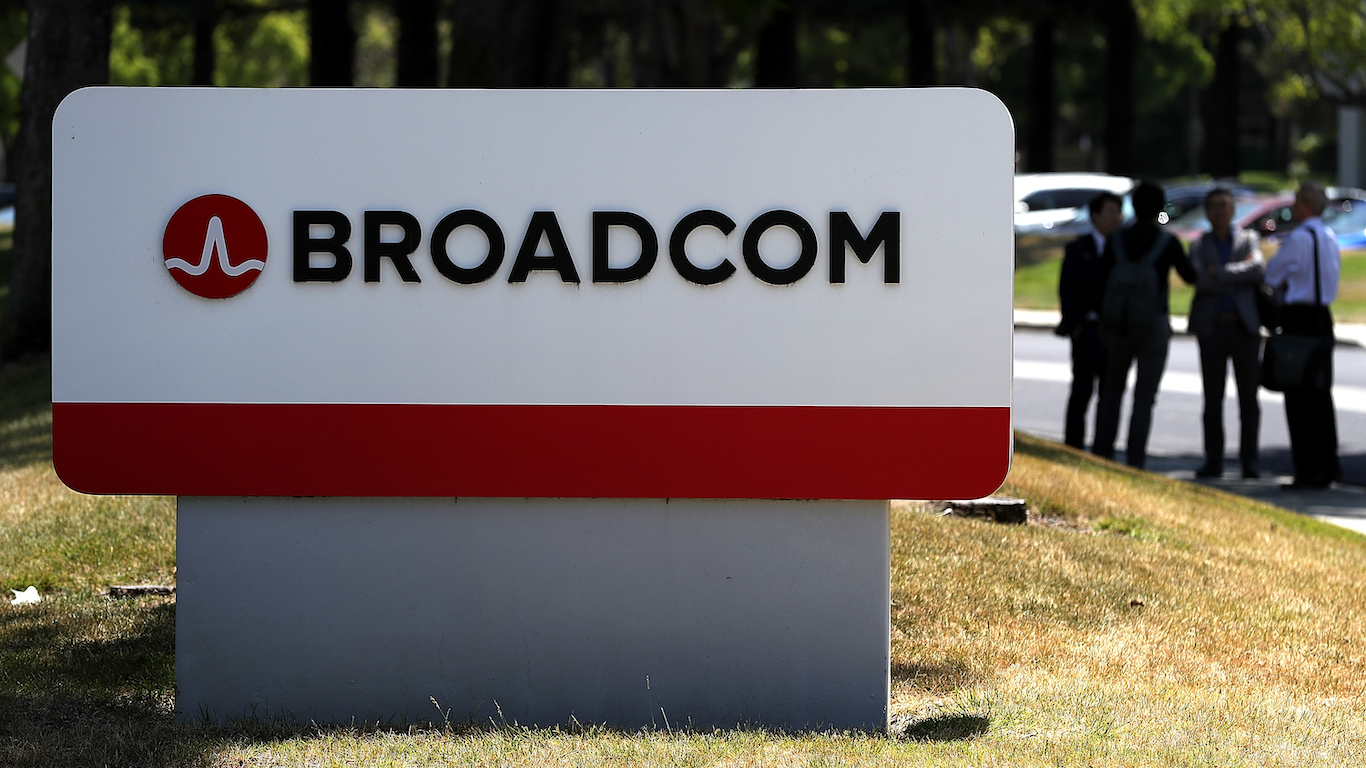
Stock splits generate plenty of buzz when they are announced. They offer investors an opportunity to buy more shares of their favorite companies. However, some stock splits lose their fizzle once investors see past the smoke and mirrors.
For instance, Supermicro (NASDAQ:SMCI) completed its stock split in October 2024, but speculation about financial fraud still caused the stock to plummet. However, other stocks have continued to march higher after their stock splits, including the three stocks highlighted in this article.
Stock splits don’t change your long-term gains. You simply end up with more shares than you already had. It’s the same pie, but it’s cut into more pieces. Two key distinctions with stock splits are the publicity they generate and the ability to trade options more easily. That’s because you can only sell covered calls on a stock if you already own 100 shares.
You don’t have to trade options to benefit from stocks that recently went through splits. These are some of the stocks to consider accumulating.
24/7 Wall St. Key Points:
- Stock splits generate more visibility for a stock and allow investors to buy a share for a lower price.
- These splits take the same pie and cut it into smaller pieces. Stock splits do not increase a company’s intrinsic value.
Should You Buy a Stock Before or After It Splits?

A stock split shouldn’t influence whether you buy or sell a stock. Stocks that perform well before and after their splits would have performed well even if they didn’t split. Meanwhile, a stock split can’t save a stock that’s declining due to bad fundamentals.
No matter how many ways you slice it up, a good pie remains a good pie. On the other hand, a bad pie remains a bad pie, even if you slice it up into little pieces. Investors should look at a company’s fundamentals, such as its financial growth and balance sheet, before buying shares.
Broadcom

Broadcom (NASDAQ:AVGO) initiated its 10-for-1 stock split on July 15, 2024. Since that split, the AI leader has continued its torrid growth, rallying by more than 25%. Artificial intelligence has been a major tailwind for the stock as demand continues to grow. Broadcom delivered 47% year-over-year revenue growth in Q3 FY24. Artificial intelligence and the VMware acquisition were big contributors to Broadcom’s growth.
The tech giant is positioned to thrive in the artificial intelligence industry, which is projected to maintain a 36.6% compounded annual growth rate from now until 2030. The long-term potential of artificial intelligence helped Broadcom recently surpass a $1 trillion market cap.
While most people don’t think of Broadcom’s dividend, it’s worth keeping in mind if you like passive income. Broadcom has a 1.08% yield, which is one of the highest yields you’ll find for a stock that has appreciated as much as Broadcom. Furthermore, the company regularly raises its dividend by 10% or more each year. Broadcom recently raised its annualized split-adjusted dividend from $2.12 per share to $2.36 per share, marking an 11.3% year-over-year increase.
Arista Networks

Arista Networks (NYSE:ANET) is another AI beneficiary that has continued to rally since its stock split. The company did a 4-for-1 stock split on December 4, 2024, and it’s up by about 3% since then. Shares are up by 88% year-to-date and have surged by 747% over the past five years.
Net profit margins have been surging, and the metric has even exceeded 40% in recent quarters, including Q3 2024. During that quarter, revenue jumped by 20.0% year-over-year. It was also up by 7.1% sequentially. Meanwhile, net income reached $747.9 million, up by 37.2% year-over-year.
Arista Networks forms the backbone of many cloud computing and AI operations. The company’s hardware is hard to beat, and its customers are the who’s-who of the tech world. Microsoft (NASDAQ:MSFT) and Meta Platforms (NASDAQ:META) are the two largest revenue sources. It requires seven times more computing power to process an AI query than it does to fulfill a Google search request. The additional computing power required for AI tools suggests that Arista Networks can continue to rally in the long run.
Deckers Outdoor

Not every stock market opportunity revolves around artificial intelligence. You may not know much about Deckers Outdoor (NYSE:DECK), but chances are you have heard of one of its brands. Deckers Outdoor is the parent company behind iconic athletic apparel brands like HOKA and UGG.
Deckers Outdoor joined the S&P 500 on March 18, 2024, the same day as Supermicro. Just a few months later, the company did a 6-for-1 stock split on September 17, 2024. Deckers Outdoor has rallied by more than 80% year-to-date, including a post-split 32% gain. Shares are up by more than 600% over the past five years.
The company posted another strong earnings report in Q2 FY25. Revenue increased by 20% year-over-year, while net income was up by 36% year-over-year. Net profit margins are getting closer to 20% as Deckers Outdoor continues to take market share from Nike (NYSE:NKE).
HOKA is propelling most of the company’s growth. That segment’s sales increased by 34.7% year-over-year, and it has a good chance of surpassing UGG’s total sales in 2025. HOKA sales stand to rise as the running boom continues to grow. As more people run, they will have to buy sneakers more frequently. Deckers Outdoor is benefitting nicely from this trend as HOKA continues to gain ground on big corporations like Nike.
Thank you for reading! Have some feedback for us?
Contact the 24/7 Wall St. editorial team.





